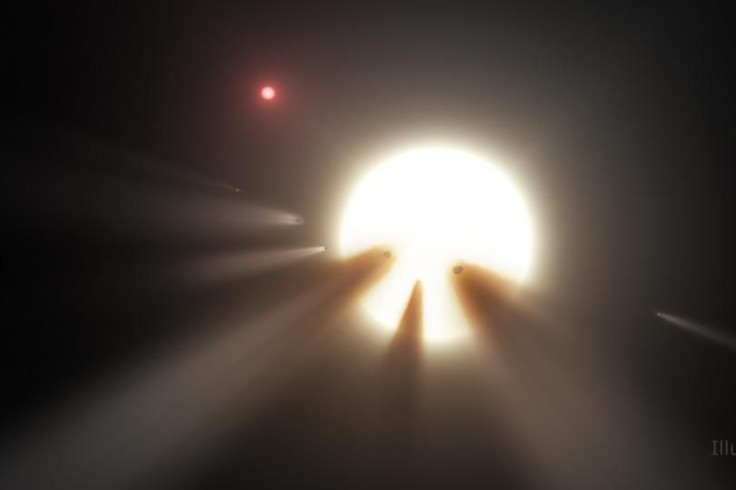Alien Megastructure Star Update: Study Suggests Internal Stellar Processes May Be Causing The Star’s Erratic Dimming

No matter how unlikely the possibility is, for many, the star KIC 8462852 — aka “Tabby’s star” — will, for the longest time, be the star that may have aliens building a gigantic Dyson sphere around it. But what if the erratic dimming of the star is caused not by something — comet swarms, dust, or alien megastructures — around it, but by some phenomenon intrinsic to the star?
This is what a team of researchers from the University of Illinois at Urbana-Champaign suggest in a new study published Monday in the journal Physical Review Letters. In it, they posit that the F-Class star’s unusual light curve may be the sign of an impending phase transition.
Before we delve into the findings of the latest study, here’s a lowdown of what we know about Tabby’s star so far:
The star, which has been informally named after the Yale University astronomer Tabetha Boyajian, who first noticed that the object was not behaving as it should — is located roughly 1,400 light-years from Earth between the constellations Cygnus and Lyra. Based on observations conducted using NASA’s Kepler Space Telescope between 2009 and 2013, a team led by Boyajian witnessed two unusual incidents, one each in 2011 and 2013, when the star's light dimmed in dramatic, never-before-seen ways — in one case, dimming by up to 20 percent.
This massive dip in luminosity indicated that something had passed in front of the star. At the time, a swarm of comets was proposed as the most likely explanation.
However, since then, several studies have argued that it is highly unlikely that a swarm of cometary could have caused the massive dip in the star’s luminosity. Other independent searches, especially tailored to detect alien radio signals and laser pulses, also drew a blank — disappointing proponents of the more outlandish theories that sought to explain the star’s behavior as something caused by the presence of an “alien megastructure” — read Dyson sphere — around it.
“There are a few telltale signs of occultation, or dimming by an independent body blocking the view,” Richard Weaver, co-author of the new study, said in a statement. “The most important is periodicity. In Tabby's star, the small and big events are not periodic — they don't occur at regular intervals — and this is one of the central mysteries of the light curve.”
According to Weaver and his colleagues, this mystery can be resolved if one uses what’s known as avalanche statistics to study the parameters of the star’s dimming. In this framework, the smaller dimming events can be seen as small avalanches — triggered when the system is subjected to a sudden external force — that are observed during the time intervals between the larger avalanches, which are the larger dimming events.
Avalanche models have been previously used to explain several phenomena in biology, physics and astronomy. In this particular case, the calculations begin by establishing a median dimming threshold across the star’s light curve.
“The threshold is an artifice we resort to in order to define what an avalanche is in the context of the light curve. In fact, the statistics are pretty robust to where we choose the threshold, so the exact value isn't important. What is important is that we get enough avalanches to do statistics,” study lead author Mohammed Sheikh explained in the statement.
While the study provides evidence that the star’s dimming events are consistent with theoretical predictions for systems near a phase transition, it does not bring us any closer to understanding what stellar process may be driving the brightness fluctuation — something that is not natural to F stars.
“As a next step we believe the same type of analysis should be applied to other stars to see how universal these fluctuation statistics are among the stars that are already known,” co-author Karin Dahmen said in the statement. “In other words we would use the statistics of the noise in the light curves in these stars to learn something about the dynamical processes that are going on inside the star.”
© Copyright IBTimes 2025. All rights reserved.






















